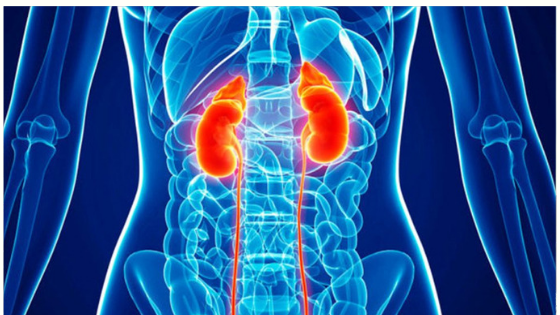If you suffer from kidney disease, exercise is vital!
Chronic kidney disease (CKD) is a rising problem around the world. Many people don’t even know they have it so experts estimate between 8-16% of the population has some form of impairment to kidney function.
The two highest causes associated with kidney disease are diabetes and heart disease (both of which are considered worldwide epidemics). In the United States, kidney disease is the 9th highest cause of death.
In fact, it claims the lives of more people than breast cancer or prostate cancer.
Renal failure is a problem that is worsening with each passing year. Treatment for kidney disease can be expensive and ongoing, not to mention the pain involved when your kidneys aren’t functioning.
Left untreated, your kidneys will fail and you’ll require dialysis or a transplant to replace them and continue to live. Annually, more than 100,000 Americans are on the national waiting list for available kidney transplants and fewer than 17,000 patients will receive them.
Your kidneys are critical to your survival so learning how to protect them is a top priority. You can live without one kidney but you cannot live without both.
What Do Your Kidneys Do?
Your kidneys are located on either side of your spine below your ribs. They are the shape of a kidney bean and approximately the size of a fist. Every day, they filter at least 120 quarts of blood and flush waste in the form of urine. They help regulate blood pressure, aid in the production of white blood cells, and contribute to healthy bones.
When your kidneys begin to lose functionality, you can experience symptoms all over your body. However, some patients experience no symptoms and do not know they have kidney disease until it is advanced.
Top 8 Risk Factors for Chronic Kidney Disease
- Diabetes (type 1 or 2)
- High blood pressure (hypertension)
- Obesity
- Smoking
- Heart disease and high LDL (bad) cholesterol
- Family history (cystic kidney disease)
- History of kidney stones or frequent kidney infections
- Age (over age 60)
The diagnosed cases of kidney failure have doubled every decade since 1980 and chronic kidney disease cases are being detected even faster. In the United States alone, more than 26 million people have advanced chronic kidney disease but experts believe the number may be much higher since there are often no signs or symptoms until the disease is in an advanced stage.
Exercise for Kidney Disease Treatment
A new study published in Clinical Journal of the American Society of Nephrology (CJASN) found that quality of life, overall kidney function, and patient pain were improved for 73% of their participants after a 12-week course of exercise was added to their treatment plan. The researchers used a similar exercise regimen to that used in cardiac rehabilitation centers.
“We’ve hit a wall of sorts in helping people live better with their chronic and incurable kidney disease,” said Dr. James Wasserman, MD with the Maine Medical Center, lead researcher on the study. “I think that is why leaders in academic nephrology and the nephrology community in general are now beginning to explore the limitations of this ‘disease-oriented’ approach, and consider applying a more ‘patient-centered’ approach to care that emphasizes additional ways to address patients’ needs and the importance of living well with chronic disease.”
A patient-centered approach? Better late than never!
Total living quality should be addressed by doctors in conjunction with standard kidney disease treatments. A crucial part of procedure in treating kidney disease is exercise!
Common Effects of Chronic Kidney Disease
- Pain in the upper back, around the liver, and when urinating
- Nausea, vomiting, dizziness, metallic taste in the mouth, ammonia on the breath
- Inability to sleep despite severe fatigue
- Itching or rash-like symptoms from toxin buildup
- Sensations of being too cold from resulting anemia
- Urinating more or less often, in larger or smaller amounts than usual
- Difficulty concentrating due to decreased oxygen to the brain
- Shortness of breath from fluid in the lungs and too few red blood cells to carry oxygen
- Swelling as a result of fluid buildup that is not removed by the kidneys
Every aspect of your lifestyle affects your prevention of disease and your ability to fight disease if you are diagnosed.
Consider adding naturally anti-inflammatory, antioxidant-rich foods such as bell peppers, cabbage, garlic, onions, berries, olive oil, and fatty fish like wild salmon to your regular eating plan. Limit alcohol intake, increase water consumption, and quit smoking if you do.
If you suffer from chronic kidney disease, exercise daily (even mild or low-impact) is beneficial! Every good habit takes time but the work you put in is worth it to save your kidneys. These good habits benefit your entire body!
Take time to read my book “The Waters of Life” right now to learn more about natural and effective ways to protect these critical organs into oldest age!




